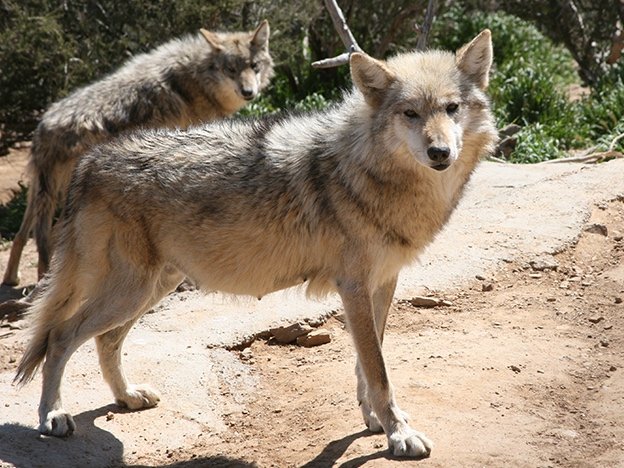Wolf Conservation Today, For a Better Tomorrow
The California Wolf Center (CWC) kicked off this year with a significant step towards Mexican Gray wolf conservation. As part of the Mexican Gray Wolf Species Survival Plan (SSP), the CWC conducted a sperm collection on five of our resident wolves. The samples are frozen and will be preserved in the SSP frozen zoo. Collecting genetic material is extremely important because it ensures a brighter future for this endangered species.
Back when the CWC was founded in 1977 the Mexican Gray wolf subspecies population was at an all-time low with only 13 wolves left in the wild, and 7 were unrelated enough to breed. In efforts to save the Mexican Gray wolves the CWC joined their SSP in 1997.
What is a Species Survival Plan (aka SSP)?
The SSP is a program designed to reintroduce Mexican Gray wolves back into the wild and grow their population through various conservation endeavors. There are currently a total of 57 facilities between the US and Mexico that are part of the Mexican Gray Wolf SSP.
Facilities carry out specific care regimens for SSP wolf candidates to keep the wolves “wild” enough for a smoother reintroduction experience. The more habituated a wolf is to humans, the less chances they will have of survival back out in the wild.
To keep the natural behavioral instincts of our wolves intact, the CWC achieves SSP established standards with these effective techniques:
Wolves are given a diet consisting of only natural prey (rabbits, deer, and elk)
Minimal human contact
The use of enrichment items (scent, food, audio, and tactile)
The Significance of Mexican Gray Wolves
Historically wolves have been given a bad reputation through fairy tales and myths. The truth about these misunderstood creatures couldn’t be further from those old stories about wolves dressing as grandmothers and destroying houses with their remarkable lung capacity.
The U.S. is home to two species of wolf the North Carolina Red Wolf and the Gray Wolf. Within the Gray Wolf species there are five subspecies, the Mexican Gray wolf being one of them. On U.S. soil they were heavily affected by anti-predator campaigns which led to their unparalleled decline in population.
Wolves are classified as a keystone species. Just as the name suggests, like a keystone in an archway. If you remove it, the structural integrity crumbles. Wolves are the keystone to their ecosystem. Without wolves, their natural environment experiences a severe shift in a multitude of animal populations leading to an imbalance between flora and fauna.
As these apex predators were wiped out, the surrounding environments experienced dramatic breaking points as well. Coyote populations skyrocketed while smaller prey dwindled. Wolves are the only species in their natural habitat able to hunt big prey such as deer and elk, and without the wolves these grazing animals multiplied exponentially causing the vegetation of the land to become scarce. The decimated wolf populations also impacted scavengers like ravens, magpies and bears due to the lack of big game carcasses taken down by wolves. It’s undeniable that without wolves, expansive landscapes like Yellowstone or Southwest regions would no longer hold their natural beauty and become uninhabitable.
The Current State of Mexican Gray Wolves and Their Hopeful Future
Earlier in this article we stated there were a mere 13 Mexican Gray wolves in the wild in 1977. As of 2022 the CWC is proud to report there are now 241 wild wolves in the U.S. and 45 wild wolves in Mexico. The Mexican Gray wolf population has come a long way since the CWC along with our partnering facilities joined the SSP. It really comes to show that working together truly does make it better! By continuing our wolf conservation through genetic material collection or providing sanctuary to 25 Mexican Gray wolves, here at the CWC, we are incredibly hopeful for the future of these important creatures.
You Can Help Secure a Future For Wolves and Our Environment
The wolves need our help to survive and thrive. There are a variety of easy ways you can help the CWC further our mission in the conservation of wolves:
Become a CWC member
Sponsor or name a wolf
Participate in our volunteer opportunities
Donate
Shop in our online gift shop or nature store
Simply spread the word about wolves and CWC’s mission
Even by reading this blog, you are being a part of the solution for a better understanding of wolves and ultimately a better tomorrow. The CWC will continue our unwavering efforts in wolf conservation to foster a healthier world for wolves and all of us who inhabit it!
Written by Caitlin D

